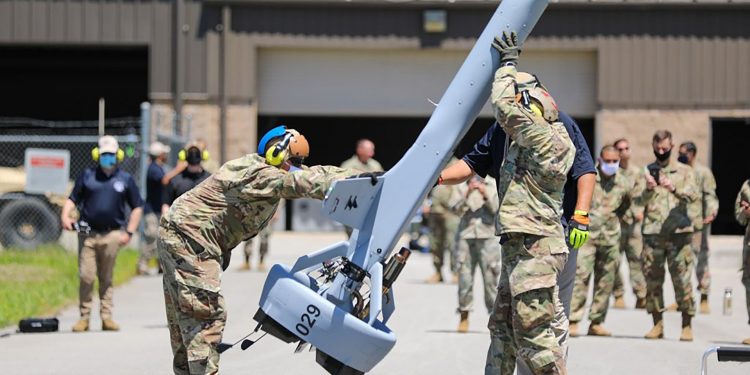All four of Future Vertical Lift’s signature modernization efforts now have approved requirements, as the Army strives to rapidly develop new aircraft to achieve overmatch, its leader said Wednesday.
The top priorities include the Future Attack Reconnaissance Aircraft, Future Long-Range Assault Aircraft, Future Unmanned Aircraft Systems, and Modular Open System Approach.
“Those four lines of effort have not changed and we continue to fight and drive on that line with the requirements development and capability development,” said Brig. Gen. Walter Rugen, who heads the FVL Cross-Functional Team.
FARA, FLRAA
A final design and readiness review for FARA, which will replace some AH-64 Apaches and fill a capability gap left by the OH-64 Kiowa, is planning to be completed by December.
After assessing five initial designs, the Army chose Bell and Sikorsky to build prototypes for this endeavor in March, and expects to start fielding the new scout aircraft by 2028.
There have also been experiments with UH-60 Black Hawks serving as FARA surrogates that shoot out small drones to test how to pierce through an enemy’s anti-access and aerial-denial environment.
“Those air-launched effects bring a tech maturation of a mesh network forward,” Rugen said, as part of a virtual discussion with the Heritage Foundation. The effects will be able to “find, fix and finish what’s hunting us.”
The Future Long-Range Assault Aircraft, which will replace the Black Hawk, is still on track to be fielded by 2030. Also in March, Bell and a joint Sikorsky-Boeing team were chosen to participate in a competitive demonstration and risk reduction effort.
Since the FLRAA will be larger than the FARA, the Army is looking at a two-engine strategy. Already, the FARA is slated to be part of the Improved Turbine Engine Program, which would also replace the current T700 engines that power Apache and Black Hawk fleets.
“It significantly reduces the logistics burden that we have out in the field, where we have multiple different engines,” said Patrick Mason, the Army’s program executive officer for aviation.
The second engine, which will later be selected by industry as part of their proposal, should offer more horsepower, he added.
Modular Open System Approach
The entire aviation enterprise aligned on a vision for MOSA after the commander of the Army Futures Command signed a requirements document for it last month, Rugen said.
As part of the effort, the final Joint Multi-Role Mission System Architecture Demonstration is set to be completed in December, he added.
An architecture collaborative working group has also been established that links government, industry and academia together. The group aims to adequately address how the Army executes MOSA for both future aircraft, Mason said.
“That is shifting a huge paradigm, where we previously built aircraft within their own platform-specific ways,” he said. “Now we’re looking at it in a holistic manner across all of the platforms to really deliver that future vertical lift ecosystem.”
First, the Army is using the UH-60V to test out the open systems approach and burn down any risk before placing it into FARA and FLRAA aircraft, he added.
Future tactical UAS
Soldiers have also been testing tactical unmanned aircraft systems that are quieter than the aging RQ-7 Shadow, not tied to a runway and can be transported by a CH-47 Chinook helicopter, Rugen said.
The Army selected five brigades to test the four prototypes that can take off and land vertically like a helicopter.
“We’re getting great data collection from the first two brigades already,” the general said.











